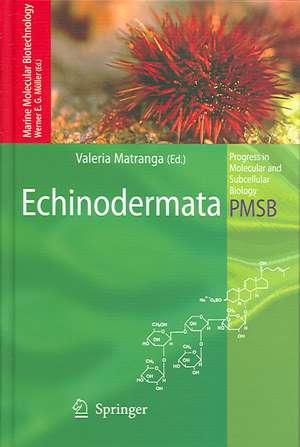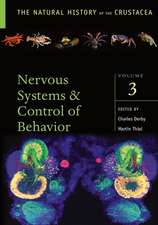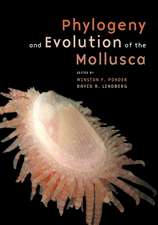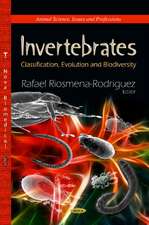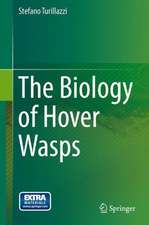Echinodermata: Progress in Molecular and Subcellular Biology, cartea 39
Editat de Valeria Matrangaen Limba Engleză Hardback – 20 mai 2005
| Toate formatele și edițiile | Preț | Express |
|---|---|---|
| Paperback (1) | 939.42 lei 6-8 săpt. | |
| Springer Berlin, Heidelberg – 19 oct 2010 | 939.42 lei 6-8 săpt. | |
| Hardback (1) | 956.50 lei 6-8 săpt. | |
| Springer Berlin, Heidelberg – 20 mai 2005 | 956.50 lei 6-8 săpt. |
Din seria Progress in Molecular and Subcellular Biology
- 18%
 Preț: 1115.46 lei
Preț: 1115.46 lei - 18%
 Preț: 1403.04 lei
Preț: 1403.04 lei - 18%
 Preț: 1112.30 lei
Preț: 1112.30 lei - 18%
 Preț: 1117.03 lei
Preț: 1117.03 lei - 18%
 Preț: 1222.49 lei
Preț: 1222.49 lei - 18%
 Preț: 1382.21 lei
Preț: 1382.21 lei - 18%
 Preț: 1232.26 lei
Preț: 1232.26 lei - 18%
 Preț: 1222.80 lei
Preț: 1222.80 lei - 24%
 Preț: 1045.93 lei
Preț: 1045.93 lei -
 Preț: 387.20 lei
Preț: 387.20 lei - 15%
 Preț: 639.73 lei
Preț: 639.73 lei - 15%
 Preț: 633.19 lei
Preț: 633.19 lei - 15%
 Preț: 634.18 lei
Preț: 634.18 lei - 15%
 Preț: 634.00 lei
Preț: 634.00 lei - 15%
 Preț: 640.24 lei
Preț: 640.24 lei - 5%
 Preț: 714.27 lei
Preț: 714.27 lei - 15%
 Preț: 634.32 lei
Preț: 634.32 lei - 15%
 Preț: 637.28 lei
Preț: 637.28 lei - 15%
 Preț: 637.78 lei
Preț: 637.78 lei - 15%
 Preț: 637.28 lei
Preț: 637.28 lei - 15%
 Preț: 649.06 lei
Preț: 649.06 lei -
 Preț: 387.75 lei
Preț: 387.75 lei - 18%
 Preț: 1220.75 lei
Preț: 1220.75 lei - 18%
 Preț: 1224.99 lei
Preț: 1224.99 lei - 18%
 Preț: 946.87 lei
Preț: 946.87 lei - 15%
 Preț: 633.35 lei
Preț: 633.35 lei - 18%
 Preț: 944.36 lei
Preț: 944.36 lei -
 Preț: 387.96 lei
Preț: 387.96 lei - 15%
 Preț: 633.02 lei
Preț: 633.02 lei - 15%
 Preț: 640.88 lei
Preț: 640.88 lei - 5%
 Preț: 720.10 lei
Preț: 720.10 lei
Preț: 956.50 lei
Preț vechi: 1166.47 lei
-18% Nou
Puncte Express: 1435
Preț estimativ în valută:
183.08€ • 198.94$ • 153.89£
183.08€ • 198.94$ • 153.89£
Carte tipărită la comandă
Livrare economică 21 aprilie-05 mai
Preluare comenzi: 021 569.72.76
Specificații
ISBN-13: 9783540244028
ISBN-10: 3540244026
Pagini: 304
Ilustrații: XXIII, 275 p.
Dimensiuni: 155 x 235 x 22 mm
Greutate: 0.76 kg
Ediția:2005
Editura: Springer Berlin, Heidelberg
Colecția Springer
Seriile Progress in Molecular and Subcellular Biology, Marine Molecular Biotechnology
Locul publicării:Berlin, Heidelberg, Germany
ISBN-10: 3540244026
Pagini: 304
Ilustrații: XXIII, 275 p.
Dimensiuni: 155 x 235 x 22 mm
Greutate: 0.76 kg
Ediția:2005
Editura: Springer Berlin, Heidelberg
Colecția Springer
Seriile Progress in Molecular and Subcellular Biology, Marine Molecular Biotechnology
Locul publicării:Berlin, Heidelberg, Germany
Public țintă
ResearchCuprins
Are Echinoderms of Interest to Biotechnology?.- Cell Adhesion and Communication: A Lesson from Echinoderm Embryos for the Exploitation of New Therapeutic Tools.- Cell Signalling During Sea Urchin Development: A Model for Assessing Toxicity of Environmental Contaminants.- Echinoderm Reactive Oxygen Species (ROS) Production Measured by Peroxidase, Luminol-Enhanced Chemiluminescence (PLCL) as an Immunotoxicological Tool.- Monitoring Chemical and Physical Stress Using Sea Urchin Immune Cells.- DNA Damage and Developmental Defects After Exposure to UV and Heavy Metals in Sea Urchin Cells and Embryos Compared to Other Invertebrates.- Echinoderms: Their Culture and Bioactive Compounds.- Regenerative Response and Endocrine Disrupters in Crinoid Echinoderms: An Old Experimental Model, a New Ecotoxicological Test.- Echinoderm Adhesive Secretions: From Experimental Characterization to Biotechnological Applications.- Mutable Collagenous Tissue: Overview and Biotechnological Perspective.- Bioresources from Echinoderms.
Textul de pe ultima copertă
Members of the phylum Echinodermata are among the most familiar marine invertebrates. Forms such as the sea star have become virtually a symbol of sea life. Used in ancient oriental medicine as a source of bioactive compounds, sea cucumbers, sea stars and sea urchins are now used for the extraction and purification of cytotoxic, haemolytic, antiviral, antifungal, antifouling, antimicrobial and even anti-tumoural activities. In addition, of the five extant classes, sea urchins and sea cucumbers are important economic resources for current fishery and aquaculture. Molecular and cell biological techniques described in this book are, on the one hand, indicative of the improvements made over the years and, on the other, stress the need of their further exploitation for the sustainable production of bioactive compounds and their application in biomedicine.
Caracteristici
Gives a comprehensive account of the progress made in the exploitation of natural products from echinoderms and their use as therapeutic tools for human health and as sensors for the detection of environmental contamination Includes supplementary material: sn.pub/extras
